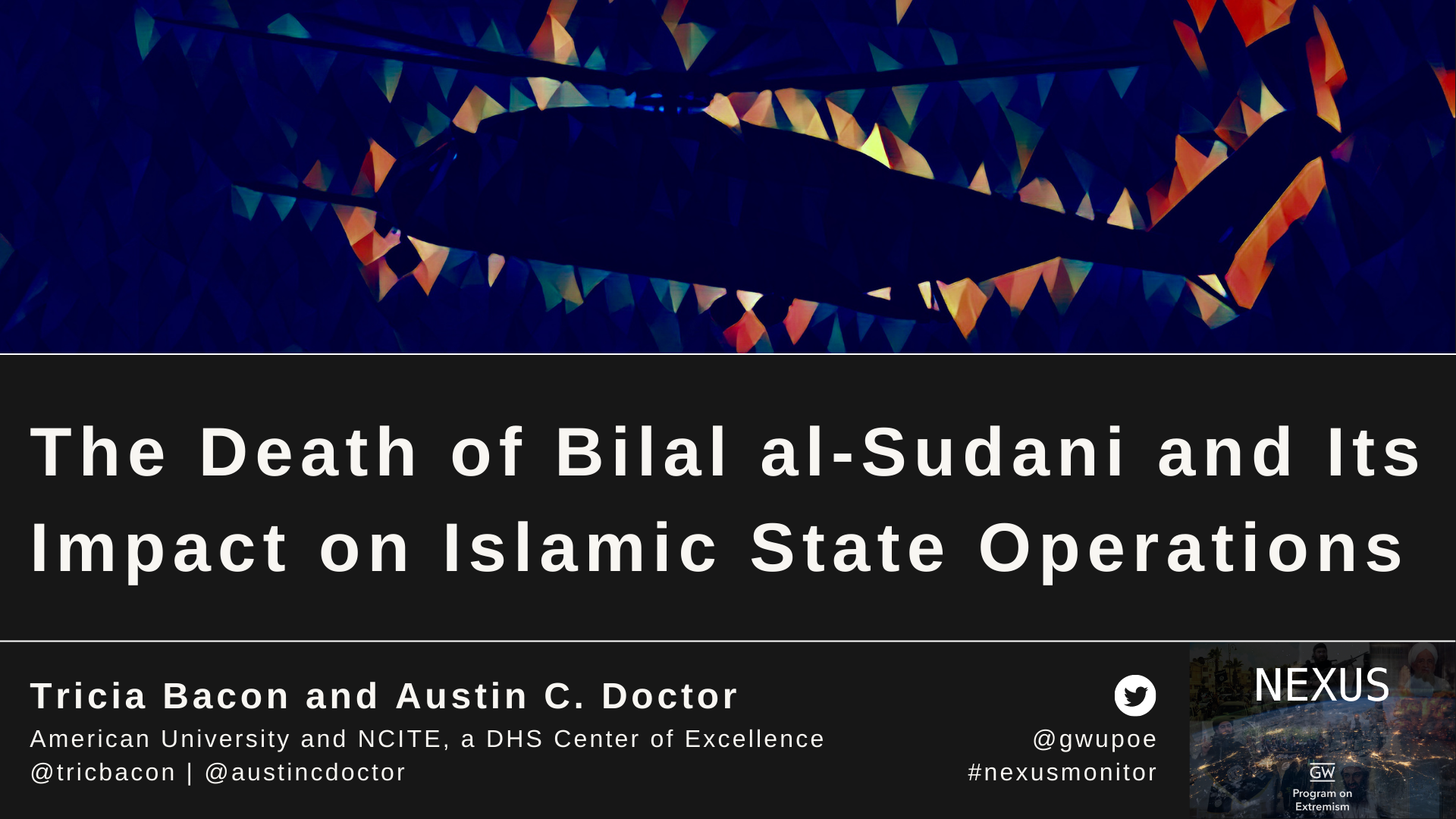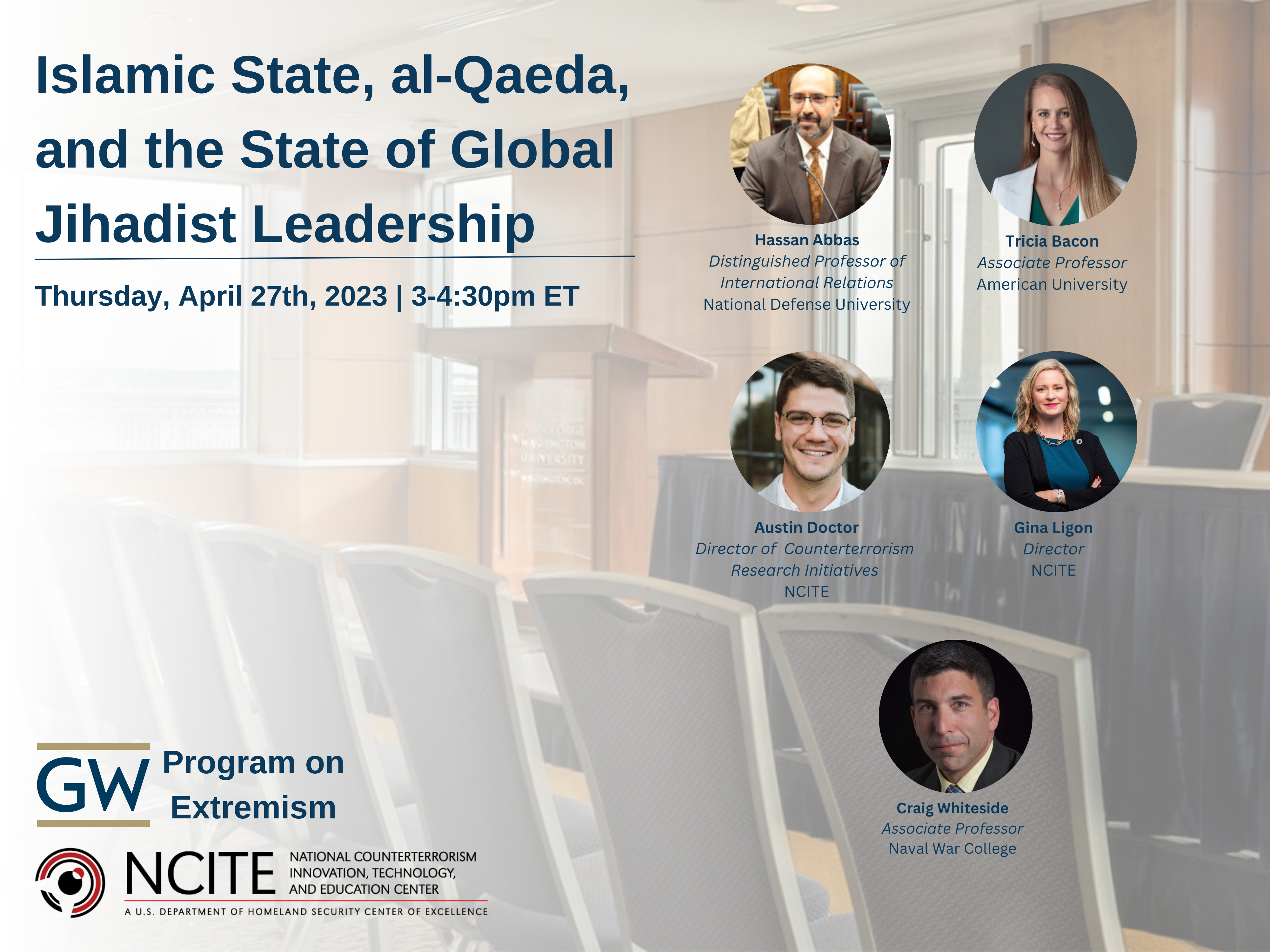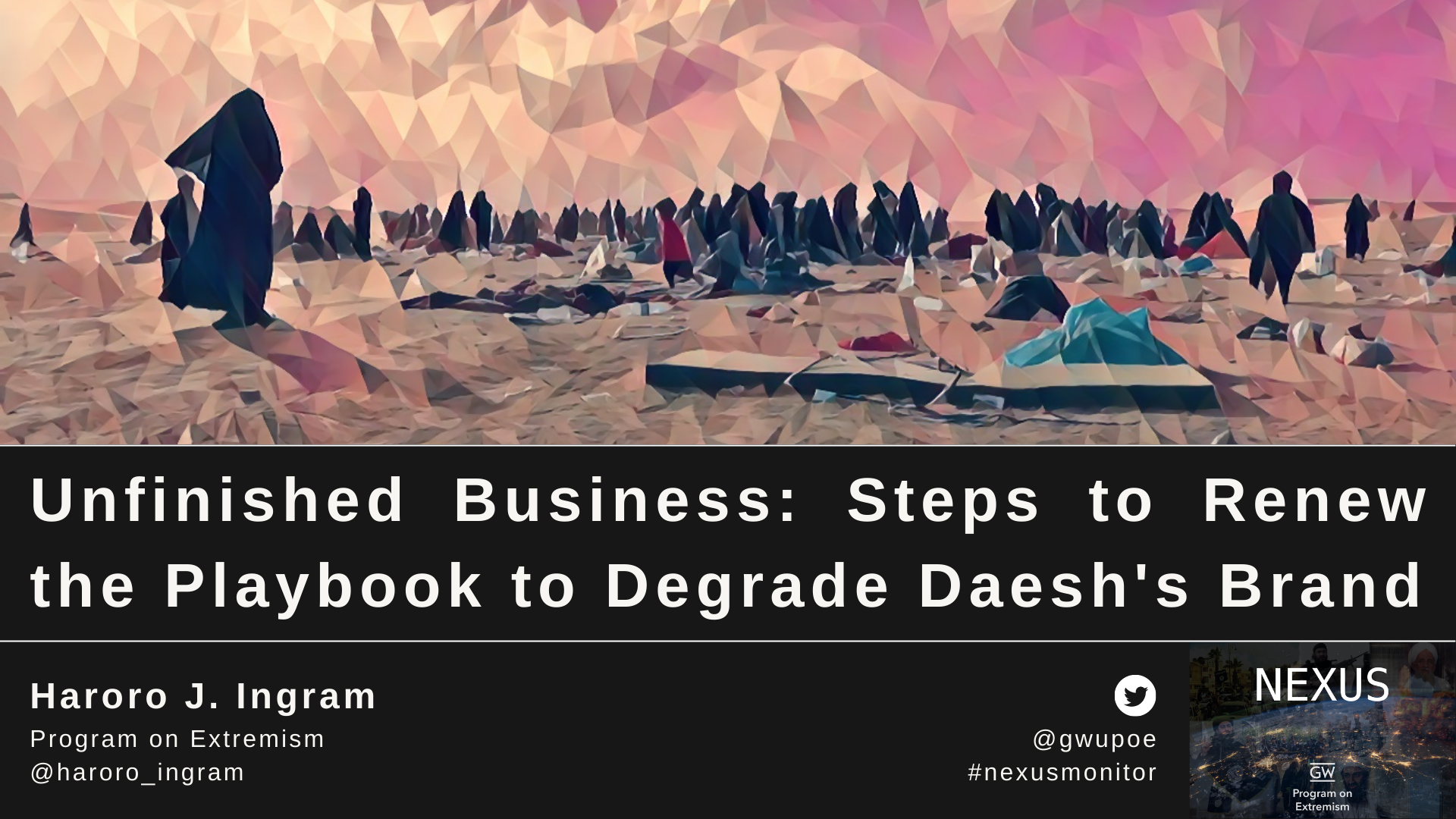PDF Version
IN LATE JANUARY, the U.S. military conducted an operation in a cave complex located in northern Somalia that resulted in the death of Bilal al-Sudani, a key operative and facilitator for the Islamic State. The raid provides further evidence that Africa has become the “epicenter” for Islamic State activity in particular and for the global Sunni jihadist movement more broadly. Certainly, counterterrorism has been downgraded as a U.S. national security priority. Yet, the use of American military personnel in a risky ground-based operation reflects al-Sudani’s importance as well as the United States’ continued desire to acquire intelligence about the Islamic State’s networks.
What does this development mean for the future of the Islamic State in Somalia, Africa, and beyond? Though a more definitive judgment depends upon the quality of the information secured in the raid – and the success of subsequent counter-threat and counter-finance activities that leverage that information – we provide an initial impact assessment of al-Sudani’s death and the U.S. operation.
In most cases, the removal of an individual terrorist leader or operative is more consequential at the local level, namely for his respective organization’s operations. But al-Sudani is an unusual case. The intelligence collected and the loss of al-Sudani will probably have the most impact at the transnational and regional levels because of his role as a key financial facilitator for the Islamic State in sub-Saharan Africa and beyond. The Islamic State in Somalia will lose some of its value as a facilitation hub for the Islamic State’s regional and global networks, but will not be significantly weakened operationally in Somalia, where it is a comparatively negligible force. Though the Islamic State’s expansion in Africa continues unabated, the loss of al-Sudani and the vulnerabilities exposed in the intelligence acquired come at a difficult time for the Islamic State’s core leadership.
Who was Bilal al-Sudani?
For more than a decade, Bilal al-Sudani has been on the radar of counterterrorism practitioners and experts. The Sudanese national was originally a member of al-Shabaab, the al-Qaeda affiliated heavyweight based in Somalia, where he facilitated the travel of foreign recruits and financed foreign fighter activity in the country. He was designated by the U.S. Treasury Department under E.O. 13224 in 2012. The fact that he was designated by Treasury rather than by the State Department is telling, suggesting that even a decade ago he was primarily assessed to be a financier and facilitator in al-Shabaab rather than an operative involved in the group’s attacks. As a result of his time with al-Shabaab, al-Sudani brought extensive contacts and experience with him to the Islamic State in Somalia when he defected in late 2015.
It is clear that Bilal al-Sudani was much more than a local player. The character of the U.S.-led mission — executed by U.S. military personnel on the ground — sends a strong signal that he was deemed by military and intelligence officials to wield an outsized effect in the Islamic State’s global financial and facilitation network. But plenty of consequential figures have been killed using airstrikes that don’t put American lives at risk. Thus, it is likely that while this was partly a capture-kill mission, it was perhaps even more so an intelligence collection one. In his role as a leading facilitator, al-Sudani would have been in possession of troves of materials that provide insight into the Islamic State’s transnational financial networks, which could only be fully exploited with boots on the ground to obtain them.
Al-Sudani and the Islamic State’s Operations in Somalia
Bilal al-Sudani was connected to two related, but unique components of the Islamic State’s operations in Somalia: its affiliated province, Wilayat Sumaal (IS-Somalia), and its regional coordinating office, al-Karrar. IS-Somalia is led by Abdul Qadir Mumin who, like al-Sudani, was also a former senior member within Al-Shabaab. The British-born Somali was known mainly as an ideologue and preacher when he pledged allegiance to the Islamic State in Iraq and Syria in October 2015. Al-Shabaab initially responded to Mumin’s breakaway with hostility and violence, which circumscribed the Islamic State affiliate’s ability to grow within Somalia. Consequently, the Islamic State in Somalia proved largely unable to expand beyond one sub-clan in a circumscribed area in the Puntland region. Its limitations may have contributed to the Islamic State’s hesitation to declare it an affiliate, which did not formally occur until nearly three years after Mumin’s initial pledge of allegiance to the Islamic State.
IS-Somalia is hardly an operational juggernaut, with limited ability to conduct significant attacks, control territory, or govern since its inception. Still, the United States has clearly kept an eye on the organization. Since 2017, U.S. forces have conducted around twenty air strikes on the group, albeit a fraction of the number conducted against al-Shabaab. And the U.S. even had detailed enough information to build a mockup of the cave complex where al-Sudani operated in preparation for the January raid.
In 2019, the Islamic State saw another role for the wilayat: to serve as a regional hub. To paraphrase Jason Warner and his colleagues – through the al-Karrar office, the otherwise underwhelming IS affiliate became a significant player in the region by overseeing financing for other affiliates and directing funds to support operations. Al-Karrar is believed to fall under the overall leadership of Mumin. But the day-to-day operations of the office seem to have fallen to al-Sudani, as he appears to have been operating in a different area than the Islamic State in Somalia’s leadership.
Open-source reports indicate that al-Karrar primarily acts as a financial hub for transmitting funds to Islamic State affiliates. With support from IS-Somalia, the regional office reportedly covers the Democratic Republic of the Congo, Mozambique, and Somalia, conducting financial transactions involving affiliates and directed by Islamic State leadership. There is little evidence of direct command and control. However, it is likely that the regional financial transfers are occasionally supplemented by direct operational support. For instance, as improvised explosive devices developed by Islamic State militants in Mozambique and the DRC have become much more sophisticated, a February 2023 report assessed that the Islamic State has probably been sending military trainers to the affiliate provinces in those areas. Through al-Sudani, al-Karrar also assisted Islamic State elements in South Africa to “become better organized and recruit new members.” In short, the office plays an outsized role in bolstering the Islamic State’s expanding presence in Africa.
The Al-Karrar office also has global reach. Its network notably extends to the Islamic State’s affiliate in Afghanistan, IS-Khorasan, which reportedly has been sent $25,000 worth in cryptocurrency on a monthly basis by al-Karrar. Notably, IS-Somalia top leader Abdul Qadir Mumin was initially sent to northern Puntland by al-Shabaab to facilitate the group’s contacts with al-Qaeda in Yemen. It is possible that when Mumin defected, he found that location beneficial to coordinate with the Islamic State affiliate in Yemen. Overall, it is clear that the office has become a key node in the Islamic State’s global financial and facilitation network.
Al-Karrar's Global Reach
Anticipated Impacts and Key Considerations
The implications of the U.S. military operation in Puntland – inclusive of al-Sudani’s death and the related site exploitation – will remain a partial function of what the U.S. retrieved and does with the intelligence obtained. In the meantime, we outline a nested analysis at the local, regional, and global levels as a starting point for assessing the scope, scale, and timeline of impact.
Often the death of an operative has mainly local impacts on a group. Al-Sudani is an unusual case in that his loss will have little, if any, impact on the conflict in Somalia or even on IS-Somalia’s military operations. Al-Qaeda’s affiliate in Somalia continues to enjoy a virtual monopoly on jihadism in the war-torn country. Al-Shabaab’s size and reach dwarfs that of the IS-Somalia, which was recently estimated to have between 200 and 250 fighters – demonstrably lower than the 7,000 to 12,000 combatants believed to be fighting under the al-Shabaab banner. Perhaps surprisingly, al-Sudani’s death may not have that much impact specifically on the Islamic State in Somalia’s coffers either, despite his broader financial significance in the Islamic State’s network. A February 2023 United Nations report estimated that the group generates up to $100,000 per month through extortion of the local shipping industry and illicit taxation in Puntland. That budget, which does not include the funds facilitated by al-Sudani, would very likely be adequate for a small group operating with a guerrilla posture over a limited geographic footprint in northern Puntland.
At the global and regional levels, we expect there to be little impact on operational command and control, as most African Islamic State affiliates have long acted as “sovereign subordinates,” and al-Sudani does not seem to have been involved directly in the Islamic State’s kinetic activities. Instead, the loss of al-Sudani and the intelligence garnered from this latest U.S. operation will probably carry the most impact on the Islamic State’s finance and facilitation networks in Africa and beyond. Al-Sudani brought important contacts and skills to the al-Karrar office, allowing the administrative unit to fill the role of a facilitation hub for the Islamic State. One White House official claimed there was no one else in the Islamic State’s global coterie of senior operatives who could match al-Sudani’s “ability to receive and distribute illicit funds — as much as hundreds of thousands of dollars at any given time.” With his death and the deaths of those with him, those contacts and relationships are almost certainly disrupted. Though operators like al-Sudani are not irreplaceable from a skills perspective, trusted relationships within networks like the ones he maintained are not easy to re-build quickly in the absence of regular interactions.
Perhaps even more problematic for the Islamic State, the United States now has intelligence on these networks. And that creates vulnerabilities for further counterterrorism actions. Thus, the Islamic State will be forced to change or even pause communications, facilitation, and logistics for fear of actions based on the intelligence gathered, the scope of which remains uncertain. Islamic State leadership in both Somalia and Syria will also have to ask themselves some tough questions about how the United States obtained such detailed intelligence about al-Sudani and al-Karrar’s operations, which will stoke concern about possible penetrations or communications security lapses.
Al-Sudani’s death and the potential danger of newly exploitable intelligence come at a time when the core organization in Iraq and Syria is reeling from a series of losses at the senior level. It lost yet another caliph in October of last year after the successful targeting of his predecessor a mere seven months prior in February. The rapid rate of top leadership turnover will likely complicate the group’s ability to quickly recover from a critical hit to its global finance and facilitation network in a key operational region.
Overall, we expect that the near-term disruptions caused by the U.S. raid will be most significant at the regional and transnational levels, with the effects extending at least over the next several months. While not a coup de grâce, the January operation represents a painful jab in an ongoing blitzkrieg of blows suffered by the Islamic State over the past year. This disruption provides an opportunity to assess the Islamic State’s current adaptive and regenerative capacity. The group may be successful in finding a skilled replacement for al-Sudani, shoring up any severed connective tissue across its regional and global financial and facilitation network, and proscribing new operational security measures to avoid similar hits in the future. But it is quite plausible that it will struggle in at least one of these areas. Thus, the Islamic State’s trajectory of recovery will, ultimately, be shaped by the ability of the United States to process the captured information and convert insights into successful counter-threat and counter-finance operations.
Looking Ahead
The information collected during the raid promises to unveil a vivid picture of al-Sudani’s operations through the al-Karrar office and, thus, a deeper understanding of the Islamic State’s finance and facilitation networks. Our impact assessment is based on public information and on a foundational assumption that al-Sudani played a valuable and not-easily-imitated role in the Islamic State’s global operations. Still, known unknowns abound. A higher-resolution judgment would benefit from more definitive intelligence on the group’s financial techniques and procedures, network health and character, and organizational structure.
The data obtained in the raid will certainly offer an opportunity to trace a trail of transfers and receipts: to follow the money. In this case, the how is likely as important as the how much. Insights into the different methods and platforms used by al-Sudani and the al-Karrar office to move funds offers an opportunity for sustained disruption. For example, what specific financial technologies made up al-Sudani’s toolkit? What proportion of its illicit transactions are moved into or out of the al-Karrar office via cryptocurrencies or digital transfers over more traditional couriers? Did al-Karrar source any meaningful proportion of its distributed funds locally, or did it primarily serve as a money manager and conduit? Understanding these tactics and processes can improve counter-finance interdiction methods and, more broadly, offer insight into how the Islamic State is managing its funds in the midst of an ongoing campaign against its leadership and global operations.
From a network perspective, identifying and disrupting any key nodes revealed in the analysis of intelligence from al-Sudani’s complex will compound the effect of al-Sudani’s loss. For example, how (inter)dependent were other known facilitators in the Islamic State’s financial network in the region – such as in South Africa – or even globally – such as in Turkey or in Afghanistan – on al-Sudani and his shop, if at all? Relatedly, the captured information presents an opportunity to further examine and understand the basis for relationships within the Islamic State’s financial network. Did individuals work together before the Islamic State’s emergence? Did they fight in Syria together? How many have shared origins within the al-Qaeda network, such as how IS-Somalia benefited from al-Sudani and Mumin’s previous connections? When al-Karrar, or the Islamic State more broadly, adapts its internal processes in response to the U.S. raid, the foundation for the relationships within its reconsolidated network will likely share many of the same characteristics. Understanding this can help facilitate the longer-term impacts identified above. It may also be worth considering whether certain nodes may be best left in place to build a better intelligence picture into how the Islamic State is trying to adapt.
With regards to organizational structure, al-Sudani’s death may carry implications for the roles and responsibilities of the Al-Karrar office moving forward. Will the Islamic State core leadership continue to have IS-Somalia stand watch over a key node of its financial network? Or has this raid damaged its utility and the Islamic State’s confidence in it? Will the Islamic State’s core leadership double-down or jumpstart a mirror twin in another area of operation, and which areas might prove most enticing? The seized data may reveal where similar competencies or “soft spots'' already lie across the organization. It is well known where the Islamic State affiliates are perpetrating violence and recruitment activities, but groups often don’t solely facilitate from spaces where they also operate. Where are the logistical hubs in other regions – and what are the underlying conditions for their selection? This moment serves as both an opportunity for disruption and continued monitoring and analysis of the Islamic State’s local, regional, and global financial architecture and activities.
The raid in Puntland was a calculated risk, but delivered a proportional payoff. While there have been concerns about a growing over-reliance on “over-the-horizon” counterterrorism and its effectiveness, the al-Sudani operation does offer reasons to hope that the United States maintains the will and capability to conduct high-impact actions that keep the Islamic State off balance.





